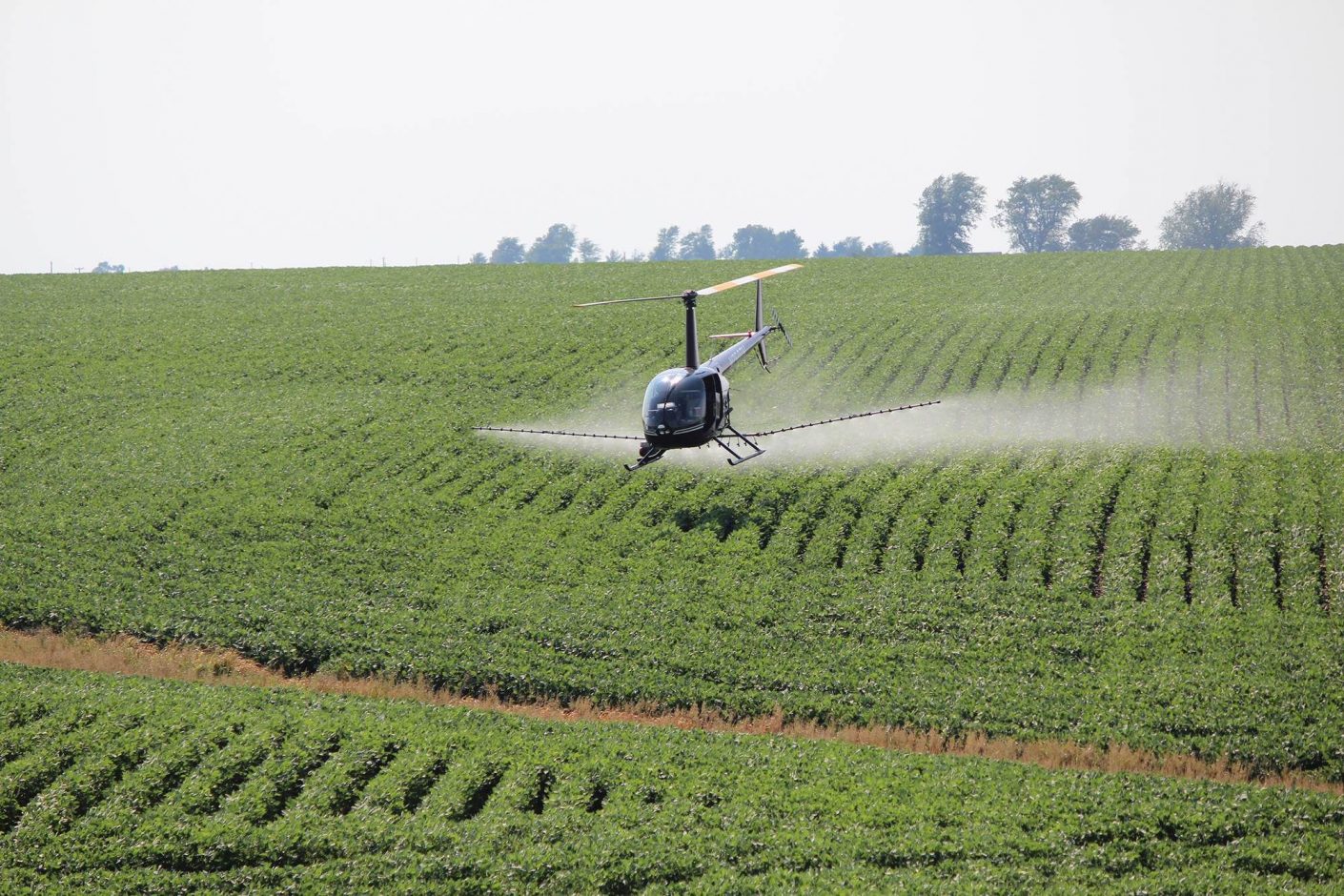HISTORY OF AERIAL SPRAYING
The use of aircraft to spray chemicals, fertilizers and seeds over crops goes back over a hundred years.
The first known application of spraying agricultural materials from the air occurred in 1906 when John Chaytor spread seed over a swamped valley floor in New Zealand from a hot-air balloon using mobile tethers.
The first patent relating to the use of aircraft in agriculture was granted to 1911 by the Imperial Patent Office in Berlin, Germany. Ten years later, two Americans used a Curtiss JN-6H Jenny biplane to successfully dust crops for the first time in the United States.
In 1957, The Grumman aircraft company began to manufacture the airplane, the G-164 Ag-Cat, designed by a major company for agricultural aviation. Up to this point, various regular fixed-wing airplanes capable of flying low and slow were adapted by dust cropping pilots to get the job done.
Although troubled at various times with safety issues and the use of questionable pesticides and harmful chemicals, agricultural crop spraying became an important part of the ag industry. Today, aerial application accounts for nearly 20% of all applied crop protection products on commercial farms.
CROP SPRAYING AIRCRAFT
Agricultural aircraft are designed so the pilot has visibility in all directions. Specialized ventilation systems are employed to protect the pilot from exposure to dangerous chemicals, to help reduce pilot fatigue, to safeguard the safety of the pilot safety and to protect the aircraft from corrosive chemical mixtures.
All aerial spraying agricultural aircraft need to be able to performance efficiently at slow speeds while carrying heavy loads. Up until the mid-1950s, only fixed wing (FW) airplanes were used to spray agricultural corps.
This changed when helicopters played an important role in transporting wounded soldiers and supplies during the Korean War. Their versatility and pin-point hovering capability suddenly gave crop dusting companies a viable alternative to FW aircraft.
HELICOPTERS VS FIXED WING AERIAL SPRAYER
Both types of aircraft have their pros and cons as aerial agricultural spraying platforms for crop protection services.
Fixed wing aircraft are cheaper to buy or rent, the pilots are more easily trained, fewer parts are required, aircraft maintenance is simpler and they are generally cheaper for crop protection services to operate.
On the other hand, helicopter precision sprayers do hold an advantage over FW sprayers in several important crop dusting functions. For one, helicopters can load off a nurse truck parked directly next to the fields they are spraying. FW aircraft have to fly to a landing strip to reload, increasing the ferrying time which translate into dollars. The turnaround time is where the productivity is in terms of flying time vs spraying time.
Helicopters work much better in over small, irregular fields and areas surrounded with obstacles like trees or power lines. And another point that pleases farmers with helicopter spraying is the fact that the rotor wash helps spread chemicals on the underside of the plants where bugs, fungus and the other pests are located.
There is no argument that helicopter precision spraying can deliver loads faster with much more accuracy than FW aircraft. It’s up to the farmer to choose the particular aircraft that fit their needs.
“DRONE ERA”
From 2019, drone prototypes appear on the market, which will ultimately compete with helicopters also in the field of aerial spraying and dusting.
Advantages of Helicopter Crop Spraying:
- Better coverage, especially important in forestry spraying.
- No trampling of crops.
- Advanced GPS technology for accuracy and precision.
- The down wash from the rotor blade pushes the product deep into the canopy.
- The tip vertices that come off the rotor blades allow for product distribution to the underside of the leaves (especially important with insecticides, aphids in particular).
- The cost is incredibly comparable to ground spraying when you factor in the absence of damaged crops.
- No ruts are made in the fields (which can occur with ground sprayers).
- Fast application in large areas.
Range of services for aerial agriculture:
CROP PROTECTION
In colder months, e.g. in vineyards or cherry orchards, crops are protected against frosts by removing excess moisture or drawing warmer air at the risk of inversion frosts.
GRANULAR HERBICIDE APPLICATION
Used eg with the unique Isolair broadcaster pods attached to the side of the helicopter. This equipment is precisely designed for low rate, precision application.
INSECTICIDE / HERBICIDE / FUNGICIDE
Insecticide spraying on crops can be fundamental to ensure the life of a crop sometimes. The helicopter fly’s low to ensure the crop penetration whilst easily landing in any open space saves time, instead of ferrying flights to and from airstrips.
SEEDING
Seeding can be done with a spreader or an underslung fertilizer bucket, ideal for pasture sowing and pasture regeneration.


